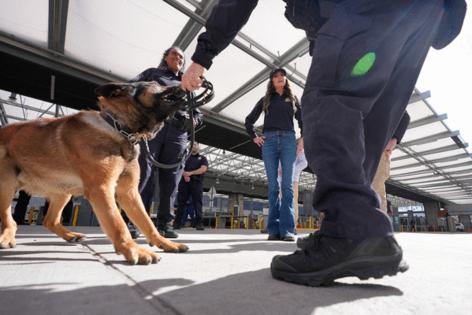Homeland Security posts, then deletes, sanctuary jurisdictions list
Published in News & Features
WASHINGTON — The Department of Homeland Security put up a website last week with a warning that it would name and shame officials in sanctuary jurisdictions, but they started removing some jurisdictions within days and have now taken down the list completely.
DHS announced the list in a social media post on Thursday that said the identified jurisdictions “are deliberately obstructing the enforcement of federal immigration laws and endangering American citizens.”
“We are exposing these sanctuary politicians who harbor criminal illegal aliens and defy federal law,” the post stated.
President Donald Trump on April 28 signed an executive order that among other things tasked DHS with making a “list of States and local jurisdictions that obstruct the enforcement of Federal immigration laws.” The directive also instructed the attorney general and the secretary of Homeland Security to notify these jurisdictions of potential violations of U.S. law.
But not long after the social media post went online, the National Sheriffs’ Association issued a statement crying foul, asserting it was put online in a way that lacks transparency and accountability. The organization says it represents more than 3,000 sheriffs throughout the United States.
“This list was created without any input, criteria of compliance, or a mechanism for how to object to the designation,” said National Sheriffs’ Association President Sheriff Kieran Donahue. “Sheriffs nationwide have no way to know what they must do or not do to avoid this arbitrary label.”
Donahue went so far as say the publication of the list violates core principles of trust and “has the potential to strain the relationship between Sheriffs and the White House administration.” The decision to publish the list, Donahue said, could “create a vacuum of trust that may take years to overcome.”
The list was part of a broader strategy of the Trump administration to crack down on jurisdictions dubbed sanctuary cities, which are known to refuse to cooperate with federal officials in certain areas of immigration enforcement. Some sanctuary jurisdictions have asserted a 10th Amendment right to decline to participate, citing legal precedent against localities being forced to participate in federal law enforcement.
Rep. Lauren Boebert, R-Colo., told a local Denver media outlet Friday that she cooperated with local officials in seeking to have localities that asserted they weren’t sanctuary jurisdictions removed from the list.
“I was informed that this list was coming out, and I didn’t think there would be much concern here in Colorado,” Boebert told the station. “I was aggressively on the phone, both receiving phone calls from folks throughout the state and communicating with the administration and ensuring that we remove these counties who are not designated as sanctuary counties or even sanctuary cities, like Aurora was listed, and I said this is a priority to get them off.”
Aurora became a flashpoint for the immigration debate during the 2024 election, when members of the gang Tren de Aragua were found to have infiltrated apartment buildings in the area. Critics of the Biden administration said it was evidence the flow of migrants into the United States had gotten out of hand, but others said complaints about the takeover were overblown.
According to versions found at the Internet Archive, the department posted lists online that removed several jurisdictions, including: El Paso County, Colo.; Weld County, Colo.; Aurora, Colo.; and Watauga County, N.C.
The updated lists also corrected spelling errors of the names of more than a dozen jurisdictions, including the state of Delaware and the city of Cincinnati.
On Sunday, Homeland Security Secretary Kristi Noem defended the list on Fox News show “Sunday Morning Futures,” saying that “some of the cities have pushed back, they think because they don’t have one law or another on the books they don’t qualify, but they do qualify.”
“That list is absolutely continuing to be used and it is going to be identifying those cities and those jurisdictions that aren’t honoring law and justice,” Noem said.
The first time the page was removed entirely was on Sunday, when an earlier version of the page included the line, “K-9 Scout wasn’t able to find the page that you are searching for,” and included image of a dog. The page as of Monday states more simply, “Page Not Found.”
A senior DHS official said via email in response to an inquiry on the webpage being taken down that the list “is being constantly reviewed and can be changed at any time and will be updated regularly.”
“Designation of a sanctuary jurisdiction is based on the evaluation of numerous factors, including self-identification as a Sanctuary Jurisdiction, noncompliance with Federal law enforcement in enforcing immigration laws, restrictions on information sharing, and legal protections for illegal aliens,” the official said.
_____
©2025 CQ-Roll Call, Inc., All Rights Reserved. Visit cqrollcall.com. Distributed by Tribune Content Agency, LLC.







Comments